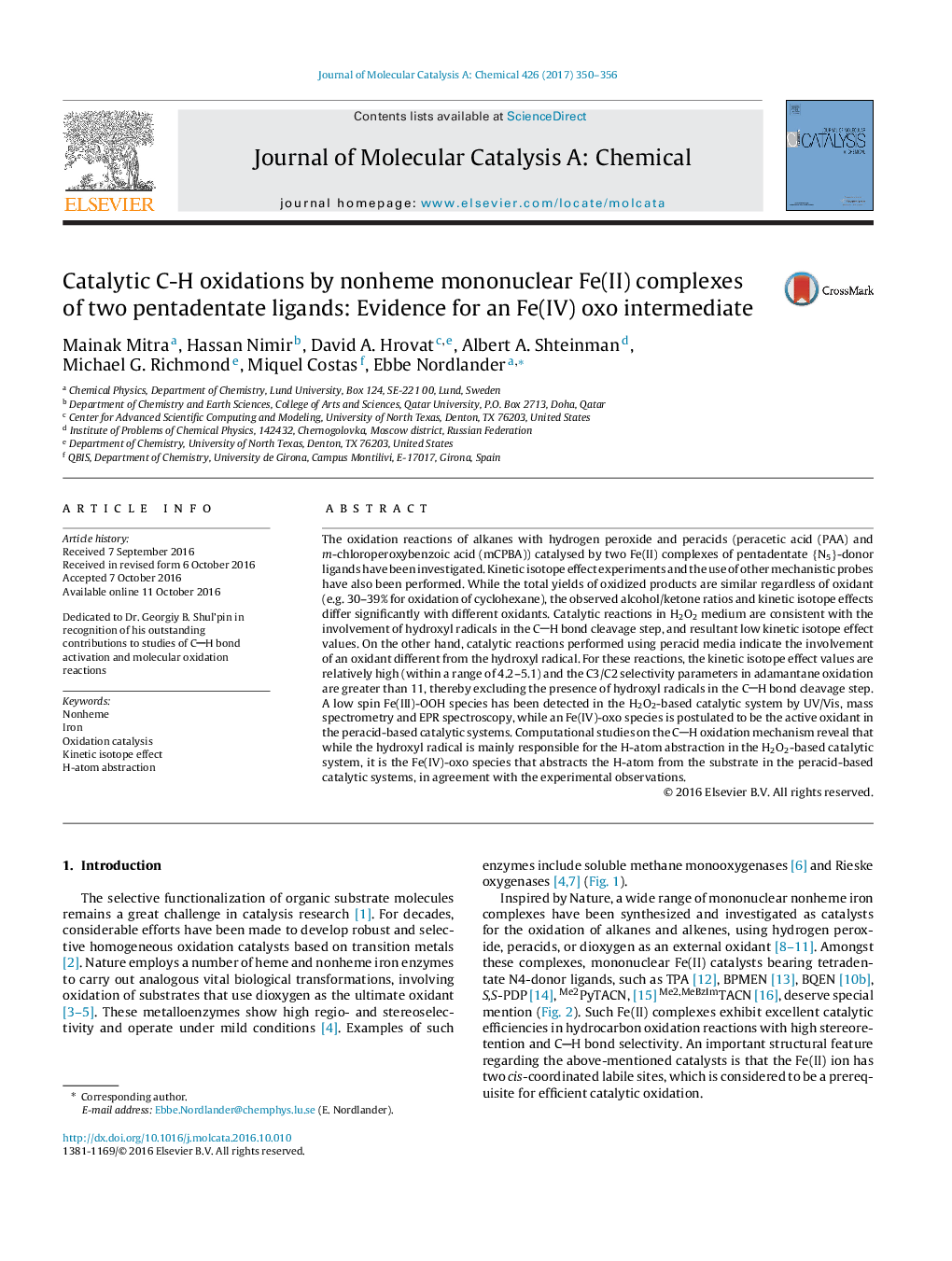| Article ID | Journal | Published Year | Pages | File Type |
|---|---|---|---|---|
| 6456413 | Journal of Molecular Catalysis A: Chemical | 2017 | 7 Pages |
â¢Fe(II) complexes of two pentadentate ligands are (pre)catalysts for oxidation of hydrocarbons.â¢Use of H2O2 as oxidant involves hydroxyl radicals; Fe(III)-OOH species detected.â¢Fe(IV) = O oxidant implicated when peracids are used as sources of oxygen.
The oxidation reactions of alkanes with hydrogen peroxide and peracids (peracetic acid (PAA) and m-chloroperoxybenzoic acid (mCPBA)) catalysed by two Fe(II) complexes of pentadentate {N5}-donor ligands have been investigated. Kinetic isotope effect experiments and the use of other mechanistic probes have also been performed. While the total yields of oxidized products are similar regardless of oxidant (e.g. 30-39% for oxidation of cyclohexane), the observed alcohol/ketone ratios and kinetic isotope effects differ significantly with different oxidants. Catalytic reactions in H2O2 medium are consistent with the involvement of hydroxyl radicals in the CH bond cleavage step, and resultant low kinetic isotope effect values. On the other hand, catalytic reactions performed using peracid media indicate the involvement of an oxidant different from the hydroxyl radical. For these reactions, the kinetic isotope effect values are relatively high (within a range of 4.2-5.1) and the C3/C2 selectivity parameters in adamantane oxidation are greater than 11, thereby excluding the presence of hydroxyl radicals in the CH bond cleavage step. A low spin Fe(III)-OOH species has been detected in the H2O2-based catalytic system by UV/Vis, mass spectrometry and EPR spectroscopy, while an Fe(IV)-oxo species is postulated to be the active oxidant in the peracid-based catalytic systems. Computational studies on the CH oxidation mechanism reveal that while the hydroxyl radical is mainly responsible for the H-atom abstraction in the H2O2-based catalytic system, it is the Fe(IV)-oxo species that abstracts the H-atom from the substrate in the peracid-based catalytic systems, in agreement with the experimental observations.
Graphical abstractDownload high-res image (54KB)Download full-size imageCatalytic oxidation of alkanes by Fe(II) complexes of two pentadentate nitrogen-donor ligands has been investigated by experimental and computational methods. When hydrogen peroxide is used as oxidant, a Fe(III)-OOH species is detected. Use of peracids lead to relatively high kinetic isotope effects and the formation of Fe(IV)Â =Â O species is implicated.
